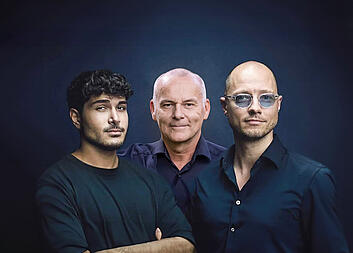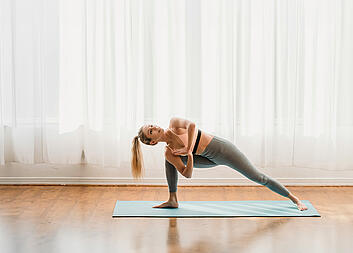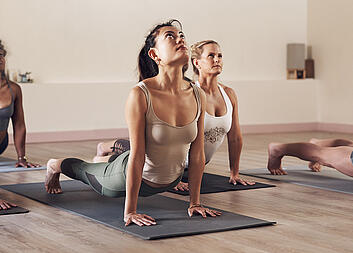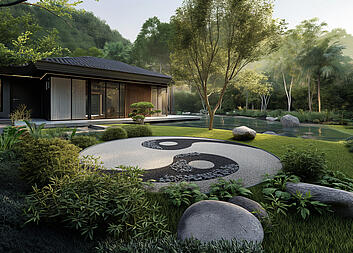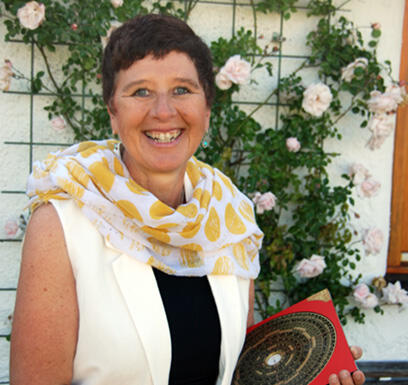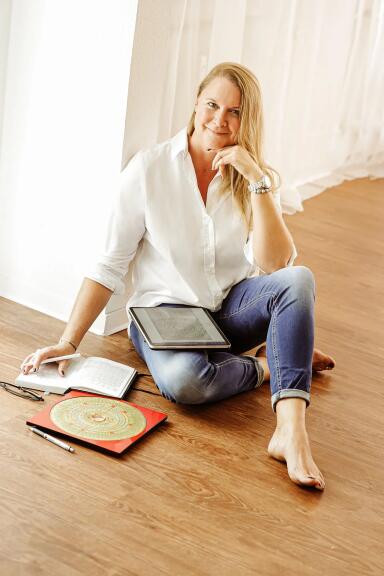Feng Shui, literally translated as "wind and water", is an ancient Chinese art and science that has been practised for thousands of years. Its origins are deeply rooted in Chinese culture and are based on harmonious coexistence with the environment. Feng Shui is not just a method for designing rooms, but a philosophy that aims to harmonise life and the environment. Through the conscious arrangement of objects and architecture, feng shui strives to optimise the flow of "chi", the life energy, and thus promote the well-being, prosperity and happiness of its inhabitants. When used correctly, it can help to balance the energies in a space, creating an atmosphere of well-being and peace.
Feng Shui
What is Feng Shui and how does it work?


Introduction
The Five Elements (Wu Xing)
The Five Elements, also known as Wu Xing, are a central part of Chinese culture and philosophy and play an essential role in Feng Shui. They represent different energies or states in nature and are: Wood, Fire, Earth, Metal and Water.
- Wood symbolises growth and new beginnings. Think of a seedling growing into a tree.
- Fire symbolises passion, energy and dynamism. Imagine a flame that provides warmth and light.
- Earth represents stability and nutrients. It is like the soil in which plants thrive.
- Metal symbolises clarity and precision. It is hard and malleable, like a forged tool.
- Water symbolises flexibility and flow. It adapts, flows around obstacles and gives life.
These elements are related to each other in certain ways. There are two main cycles:
- Generation cycle: Here one element nourishes and strengthens the next. For example, wood nourishes fire (wood can burn and energises fire).
- Control cycle: Here one element controls or weakens the other. For example, metal controls wood (metal can cut wood).
In Feng Shui, these elements are used to create balance in a room or environment. For example, if a room seems too "hot" or energised, you could add elements of water or wood to calm the fire and create a harmonious balance.
By understanding the Five Elements, we can learn how different energies interact and how we can utilise them in our living space to promote harmony and prosperity.
Wood symbolises growth and new beginnings. Think of a seedling growing into a tree.
Fire stands for passion, energy and dynamism. Imagine a flame that radiates warmth and light.
The Bagua
The bagua is an important tool in feng shui and is a kind of map or grid that shows how different areas of life are connected. Think of the bagua as a compass, but instead of just showing directions, it shows eight areas of life (plus the centre, which represents overall wellbeing).
The eight areas of life are:
- Prosperity & Wealth
How we attract abundance into our lives. - Reputation & Reputation
How others perceive us. - Partnership & Relationships
Our connections with other people. - Family & Health
The health and relationships within our family. - Children & Creativity
Our ability to be creative and our relationship with children. - Helpful friends & travelling
Supportive energies in our lives and our love of travelling. - Career & Life Path
Our career path and our life goals. - Knowledge & Wisdom
Our quest for learning and inner growth.
In the middle of the bagua is the centre, which stands for our general well-being and health.
To use the bagua in practice, place it over the floor plan of a house or room. This allows you to see which area of the room corresponds to which area of your life. If a certain area in your life needs attention (e.g. career), you can optimise the corresponding area in your home to promote this energy.
By using the bagua, we can not only understand how our physical space affects our lives, but also how we can make changes to live a more harmonious and fulfilling life.
Yin and Yang
Yin and yang are concepts that many may have heard before. They represent the dual forces or energies that exist in everything. In simple terms, they are the ultimate symbol of balance.
- Yin: This is the calm, passive, inward-facing energy. Think of the cool shade under a tree or the stillness of the night. It is soft, dark and welcoming.
- Yang: This is the active, dynamic, outward-facing energy. Imagine the heat of the midday sun or the sound of a waterfall. It is bright, hard and giving.
There is yin and yang in every area of our lives and in our space. For example, a room with lots of bright colours and sharp edges can be considered too 'yang-dominant'. A room that is dark and quiet could be too 'yin-heavy'.
Feng shui aims to create a balance between these two energies. Why? Because when they are in balance, they promote harmony and well-being. If one is too dominant, it can lead to restlessness or sluggishness.
Example: If your bedroom is too bright, noisy and full of activity (too much yang), it can be difficult to relax and sleep. On the other hand, if it's too dark and quiet (too much yin), it can feel sluggish and depressing.
The art lies in balancing these energies so that they serve our wellbeing and the intended purpose of the space. By understanding yin and yang, we can create spaces that both energise and calm us, depending on our needs.
The additional knowledge that yin is associated with feminine energy and yang with masculine energy adds another layer of understanding. It is important to recognise that these attributions are not strictly tied to gender, but rather are metaphors for the type of energy they represent. In every person and in every aspect of life, both energies are present and necessary for a complete, balanced existence.
Chi - The energy of life
The concept of "chi" can be thought of as the invisible energy or life force that flows in everything - from people and animals to spaces and objects. It is what keeps us alive and energises us, similar to 'prana' in yoga or 'life force' in many cultures.
Feng shui is about optimising the flow of chi. Imagine chi like water in a river. When it flows smoothly, it carries nutrients, revitalises and refreshes everything in its path. When it is blocked, it can stagnate, leading to problems.
In a home or office, we want the chi to flow smoothly and freely, not too fast and not too slow. Chi that is too fast (like a rushing river) can overwhelm us and lead to restlessness. Chi that is too slow or stagnant (like a pond of stagnant water) can lead to sluggishness or a feeling of stagnation.
How can we influence the flow of chi? Through the arrangement of furniture, the choice of colours, plants, art and other design elements. A clear entrance, open spaces and uncluttered areas encourage the flow of chi. Blockages, such as a pile of clutter or a piece of furniture blocking the way, can impede the flow of chi.
The aim of feng shui is to create a space in which chi flows harmoniously, which in turn promotes the well-being, health and general success of the people living in it. It is about creating an environment that supports and nourishes our life force.
Feng Shui in everyday life
Chapter 6, "Feng Shui in everyday life", is about how to apply the principles of Feng Shui in everyday living spaces so that they are not only aesthetically pleasing but also energetically balanced.
Let's start with some of the rooms we use every day:
- Bedroom
A calm, relaxing energy should prevail here to promote rest and sleep. This could mean removing electronic devices, choosing soft colours and positioning the bed so that you can see the door but are not directly in front of it. - Livingroom
A room for relaxing and socialising should be inviting. Comfortable furniture, plants and artwork that brings joy can help. Be sure to arrange seating in a way that encourages conversation. - Kitchen
As the heart of the home, it should be clean and tidy. Good lighting, clear work surfaces and fresh herbs can promote positive energy.
The choice of colour also plays a role. While blue can promote relaxation, red can stimulate activity and appetite.
Shapes and materials are just as important. Round shapes, for example, promote harmony, while angular shapes can have a more energising effect.
Essentially, it's about designing your own home in such a way that it meets the needs of the occupants and promotes positive energy. This doesn't just mean that the room looks "nice", but also that it "feels" good and contributes to the overall quality of life. In this chapter, we learn how we can improve our daily living space through simple adjustments and considerations.
Personalised Feng Shui and Kua number
Personal Feng Shui and the Kua number refer to the customisation of Feng Shui techniques based on a person's date of birth. Whilst many Feng Shui principles are universal, there are also individual aspects that should be considered to maximise the benefits.
The Kua number is a key element of personal feng shui. By calculating this number based on your date of birth, you can find out which directions are most or least favourable for you. This can be useful when making many decisions, such as which direction your bed should face, where you should sit at a desk or even how you should orientate your home.
There are nine Kua numbers, and each has its own favourable and unfavourable directions. These directions are associated with different aspects of life, such as wealth, health or relationships.
For example, if you find out that your favourable direction for prosperity is the south-east, you could try to work in this direction or arrange your home to emphasise this area.
Knowing your Kua number and the favourable directions associated with it can help you to better align your life and create harmony between yourself and your surroundings. It is another tool in Feng Shui practice that helps to optimise individual energy and the environment.
Feng Shui and landscape (school of forms)
Feng shui goes far beyond the interior of our homes; it also looks at the environment and landscape in which we live. The Form School, also known as "Form Feng Shui", focuses on exactly this. It refers to the visible shapes and structures around us, such as buildings, roads, mountains, water and other natural and man-made elements.
These shapes and structures, like everything else in our environment, emit energies that can influence us. For example, mountains can symbolise protection and support, while a flowing river can represent the flow of energy and prosperity. However, challenges can also arise, such as a sharp street corner pointing directly at a house, which is considered a 'poison arrow'.
It's about recognising how these shapes and structures influence us and how we can use them to our advantage. A well-designed garden, the positioning of a house in relation to the surrounding structures or the way a building sits in relation to a natural body of water can all have a significant impact on the feng shui of that place.
By understanding the School of Forms, we can learn how to create harmony with the environment and how to utilise the positive energies of the landscape and mitigate potential challenges. It is a way to ensure that we have harmony and balance not only in our homes, but also in the larger environment in which we live.
Practical application and implementation
The theory and philosophy of feng shui is fascinating, but ultimately it is about putting this knowledge into practice. Practical application and realisation" involves concrete steps and techniques that can be used to apply what has been learned in real rooms and environments.
Here, you often start by taking stock of your current room or home. Which areas feel good? Where are there challenges? Using a bagua, a kind of energetic map, you can identify the different areas of life in a room or floor plan.
Using this map as a guide, targeted changes can then be made, whether by rearranging furniture, adding or removing decorations or applying certain 'cures' to address problematic energy areas.
Practical examples could be:
- A fountain in the wealth area of a room to encourage financial flow.
- Placing images of lovers in the relationship area to support romance and partnership.
- Removing clutter from the career area to promote clarity and focus at work.
It's about making conscious choices about the design and organisation of a space based on the principles of Feng Shui. This chapter provides the necessary toolkit to put what you have learnt into action and bring about real, positive change in your own environment.
Modern adaptations and western Feng Shui
While Feng Shui has its roots in ancient Chinese culture, it has evolved over time and adapted to different cultures and modern lifestyles. "Modern Adaptations and Western Feng Shui" sheds light on this evolution and shows how traditional Feng Shui is interpreted and applied in the Western world.
Western interpretations of Feng Shui often emphasise the psychological and emotional aspects of interior design. It is not just about optimising the flow of energy, but also about creating spaces that promote individual well-being and mental health.
Modern design principles and western aesthetics are combined with the basic principles of feng shui. This can mean, for example, utilising minimalist design approaches that promote order and clarity, or using environmentally friendly materials that are harmonious for both people and the environment.
In the western world, it can also be about applying feng shui principles in office environments, urban living spaces or modern architectural concepts.
It is exciting to see how an ancient art form can adapt to modern conditions while still retaining its core principles. This area of Feng Shui is particularly relevant for people who live in Western cultures but still want to utilise the benefits and wisdom of Feng Shui in their daily lives.
Feng shui courses / trainings
6 Monate Feng Shui Basic Ausbildung
Feng Shui Basic AusbildungFeng Shui Experts
Nima Soraya | Feng Shui Consulting
Nima Soraya | Feng Shui Consulting | Upgrade your LifeFeng Shui Allgäu
Feng Shui AllgäuAnnette Huber - Feng Shui Beratung
Annette Huber - Feng Shui BeratungThomas Werner - Feng Shui Berater
Thomas Werner - Feng Shui BeraterNicole Zaremba - Klassisches Feng Shui
Nicole Zaremba - Klassisches Feng ShuiRaum 1 bringt positive Impulse in ihre Welt
Raum 1 - Planen, optimieren, gestalten nach Imperial Feng ShuiBirgit Sienczak - Pure Feng Shui
Birgit Sienczak - Pure Feng ShuiFrank Fricke | Feng Shui und Geomantie Berater Qi-Mag®
Frank Fricke | Feng Shui und Geomantie Berater Qi-Mag®Freya Suhre - Einrichtungsberatung & Feng Shui
Freya Suhre - Einrichtungsberatung & Feng ShuiLatest knowledge articles

